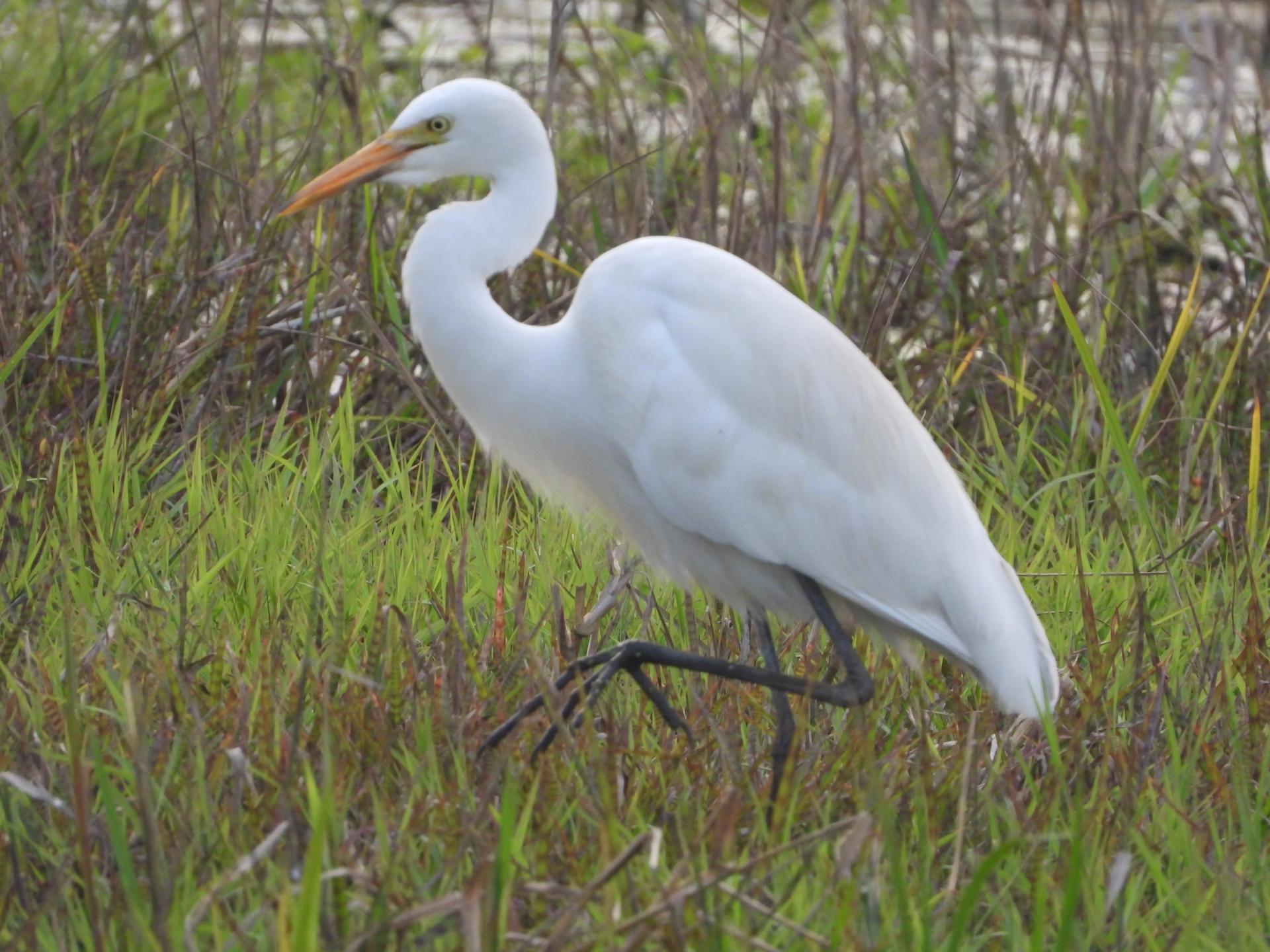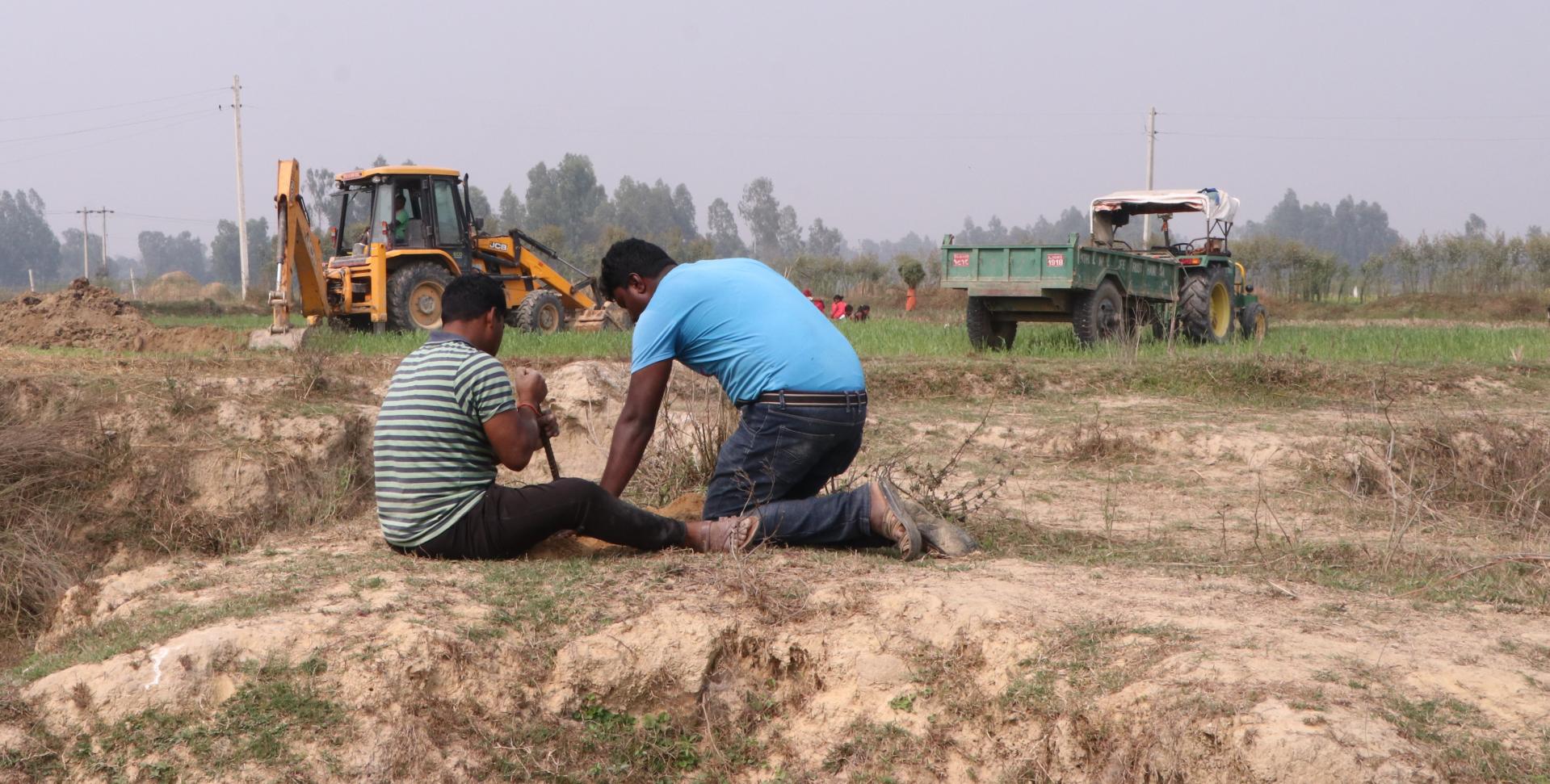Pipal Tree and our NGO partner The Mithila Wildlife Trust (MWT) have been pioneering the rapid-growth Miyawaki Method for two of our exciting reforestation projects in south Nepal - the Dhanusha Bird Park forest and The Gurkha Memorial Forest. The former launched in December 2021 and is being implemented in phases, as funds become available. In earlier blog posts we focussed on describing the method of site preparation for planting saplings, the diversion and development of the nearby small river, the securing of the site to exclude grazing animals and, of course, the planting of the saplings. In development terms, these are called "outputs", the tangible items that can be related to the budget. Happily, after a year we are now starting to see the "outcomes", the end result of the project which in the case of the Bird Park is attracting endangered species, feathered and non-feathered, to the new forest and river. I am delighted to share some pictures of the wildlife that I received from Dev Narayan Mandal, Chairman of MWT, just this morning.

Let's start with these Black-headed Ibis (or Oriental White Ibis) which have not been sited before in the forest area. The species is widespread across south and southeast Asia and found as far east as Japan but is considered to be in moderately rapid decline. We now have four of them as regular visitors, the two grey-headed ones being juveniles. They feed on fish and frogs and nest in the monsoon season when they build stick nests in the trees. They lay two to four eggs, so, we'll hope for a mini population boom this year.

The Asian Woolly-necked Stork is also widespread across south and southeast Asia, although rare in Nepal. It is classified as "near threatened" on the International Union of Conservation for Nature (IUCN) Red List for threatened species with a declining population. A 2015 count in Nepal found only 68 birds nationally. The birds feed in wetlands and have declined through wetland degradation, reduction of nesting trees, use of pesticides in farmlands and excessive hunting. The bird had been seen at our location before but I am very pleased to report that we now have a flock of SEVEN of them as regular visitors to the Bird Park.

The Great Egret isn't an endangered species although it is found only in certain areas of Nepal. It's a splendid bird that has joined the foraging storks at the site.


There are some very welcome four-legged interlopers at the Bird Park forest. The Jungle Cat isn't uncommon but the Bengal Fox is threatened through habitat destruction and from attacks by domestic dogs. A pair of Bengal Foxes moved into the site even as it was being set up and the population has now grown to seven.
These are all small outcomes but highly significant ones, given that the project is still just over a year old.
Meanwhile, at the Gurkha Memorial Forest we are still in the stage of delivering "outputs" towards the "outcome" of commemorating Gurkha heroism by creating a wildlife corridor. The pictures below show the ground being prepared at the first of our Victoria Cross (VC) forests - "VC 1" - that we are setting up in memory of Captain Lal Thapa VC. The diggers need to excavate to a depth of five to six feet to place the layer of compost that will turbo charge the growth of the saplings. We are working hard to get those saplings into the ground while it is still comparatively cool in this part of Nepal, but we will have to water them intensively during the heat of April through to June, before the monsoon rains take over that responsibility.


How you can help
We are currently fundraising towards the cost of planting saplings at both sites - Phase 4 of the Bird Park and at "VC 1". It costs approximately £10 per square metre that will accommodate nine saplings planted closely together.
You can donate towards the Dhanusha Bird Park forest using the button below. And, if you wish, I can send you a digital personalised Valentine card to send to your loved one this Valentine's Day. Just give me the name, or nickname, that you would like on the card and I can send you this by return. If you're quick!
You can donate towards the Gurkha Memorial Forest project work through the button below:
Many thanks!






.png)

.png)

